Originally published on Skytop.
Many of us have recently pondered the question: which vaccine is better—Pfizer, Moderna, or J&J? Those of us interested in sustainability may also want to know which of these companies has the best ESG (Environment, Social, Governance) performance?
CSRHub’s ESG ratings service tracks all three companies (we currently track more than 45,000 entities). All three companies have above average ratings.
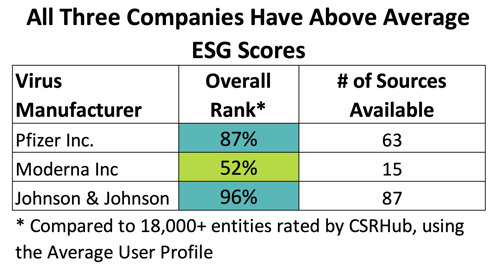
All three have shown improvement over time—although the ratings history for Moderna is shorter than for the rest. It went public in December 2018 and had not released much sustainability data before this. (CSRHub does track many non-public entities.)
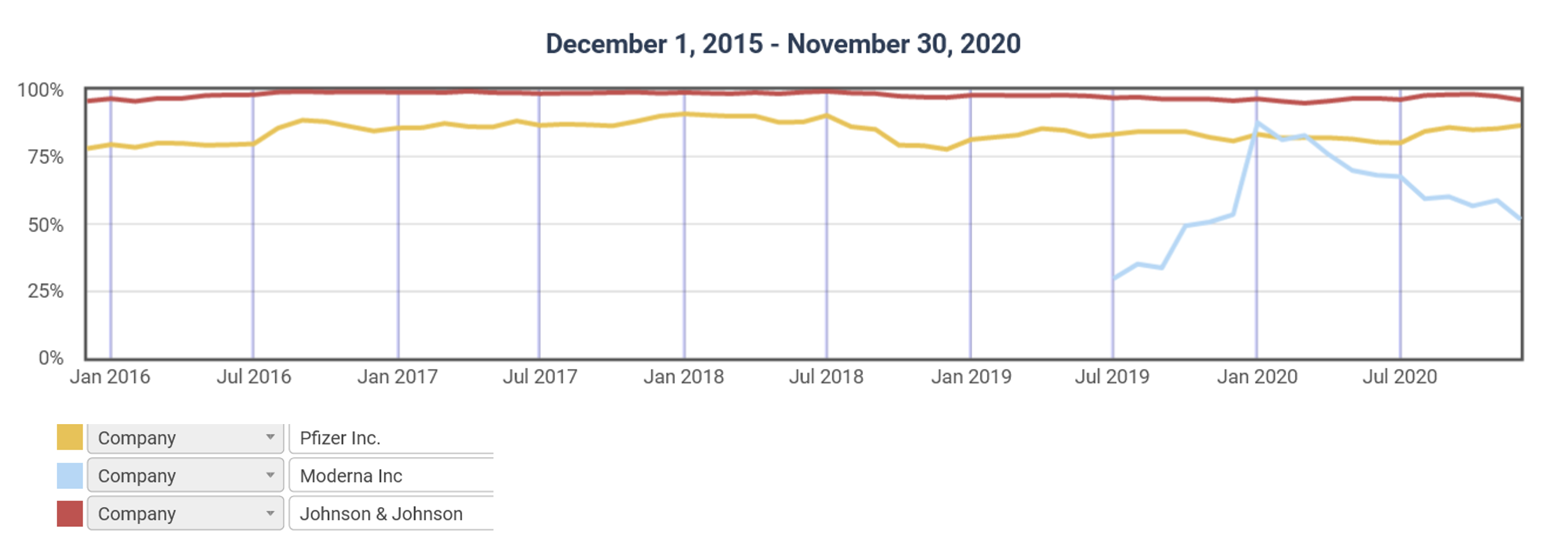
This simple comparison of the three companies obscures some deeper questions about how ESG ratings are formed. Continue reading for an in-depth look at the development and availability of this data.
Pfizer, Moderna, J&J: How Much ESG Data Is Available?
The top level comparison of the three leading COVID vaccine producers showed that Johnson & Johnson had a better consensus rating of its sustainability performance from CSRHub than its two peers, Pfizer and Moderna. But, how well supported is this view? How much data is there on these companies? Can we diagnose where and why one company does better and another does worse?
The table below shows that these companies are all well studied. Over time, CSRHub has gathered around 60,000 pieces of data on Pfizer and J&J. This data came collectively from more than 300 different sources. Some of these sources have stopped reporting and some of the data elements we gathered have “aged out.” The current data available to create a rating now ranges from 19,012 data elements from 87 sources for Pfizer to 6,252 elements for Moderna from 15 sources.

Not all of these data elements are useful for generating an ESG rating. For instance, we have published studies showing that the Brand Finance Brand Strength Indicators and the Goods Unite Us Campaign Finance Report Score are correlated with CSRHub’s measure of Leadership Ethics. But, data elements such as Dividend Payout Ratio, number of Board meetings, number of patents, or marketing and communications quality don’t by themselves tell us much about a company’s social performance. Other items such as E-waste or involvement in weapons production don’t apply to this type of company.
The percentage of data elements that are “useful” ranges from 14% to 30%. A lot of data enters the ESG ratings market from big, investor-oriented ratings firms such as MSCI, ISS, S&P Global, Moody’s (V.E), Covalence, Arabesque S-Ray, and Ideal Ratings. (All of these firms contribute data to CSRHub.) However, smaller sources contribute a significant amount of information—ranging from 3% for Moderna to 29% for J&J.

We have hundreds of data elements available—enough to accurately rate all three companies. How comparable is the data and how are the ratings inputs on them distributed?
Pfizer, Moderna, J&J: Do They Have the Same Sources?
One might expect that three competitors in the same industry would have the same data sources. Our example companies provide a nice illustration that this is not true. It turns out that all 15 of the sources available on Moderna are also available for Pfizer and J&J. However, both Pfizer and J&J have sources that the other one does not.
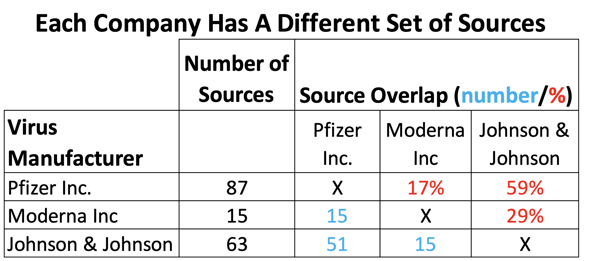
Some may assume that when two companies have the same sources, they will have the same data elements. This is also not true. Many major ESG data sources are more empty at the indicator level than full.
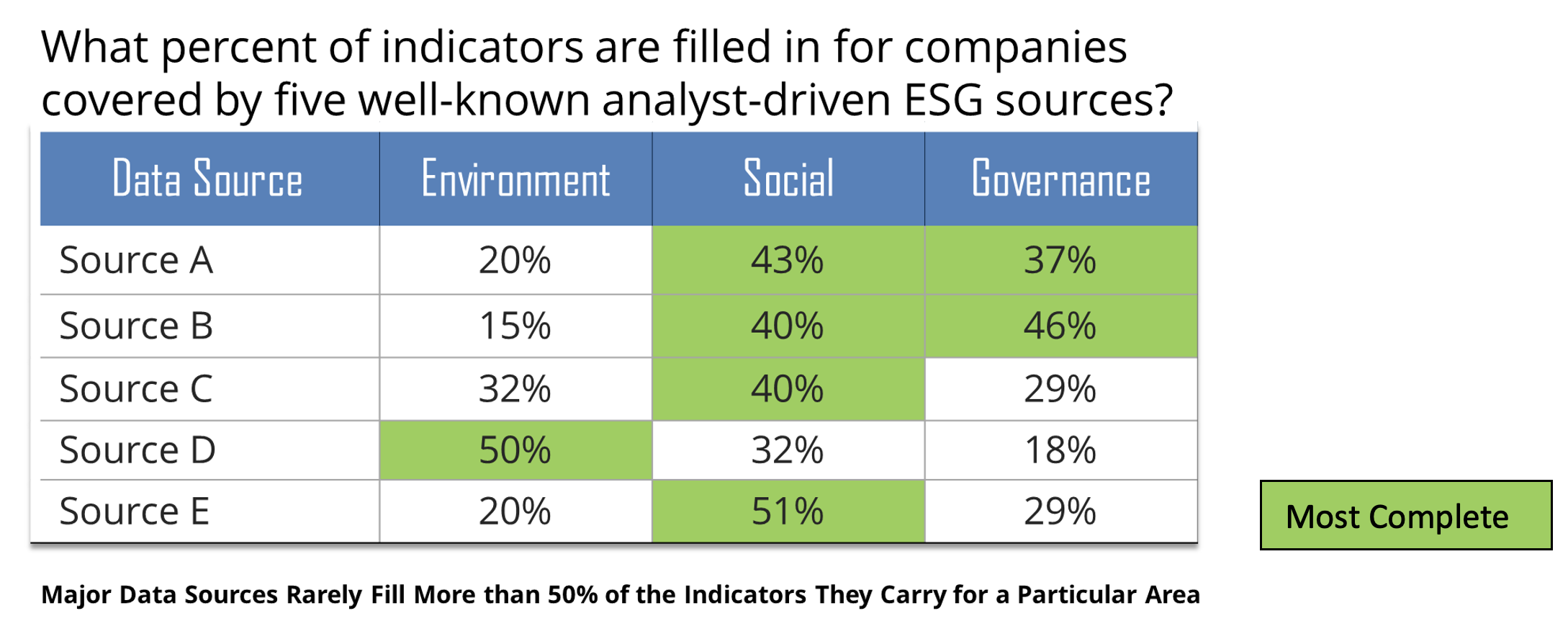
As a result, a rating of each of these three companies must be based on different sets of indicators from a different array of sources. The percentage overlap at the indicators level between Moderna and the two more-established companies is over 95%. The percentage overlap between Pfizer and J&J is about 90%.
The DNA of humans and cats have a 90% overlap—about what we see between the data elements available on these two companies. Should we worry about data inconsistencies? What can we learn from the overlapping elements and how do non-overlapping elements help improve our understanding?
Pfizer, Moderna, J&J: How to Combine the Signal from Overlapping and Non-Overlapping Sources?
Let’s start by focusing on just the 2,505 elements that are present in both Pfizer and J&J. About 2/3rds of these have the same rating for both companies. Many of these are policy or reporting “check offs” such as “Does the company offer Day Care Services?,” “Is there a whistle-blowing procedure?,” or “Does the company publish a sustainability report?” Where there are differences, J&J gets the better score by a 3-1 margin.
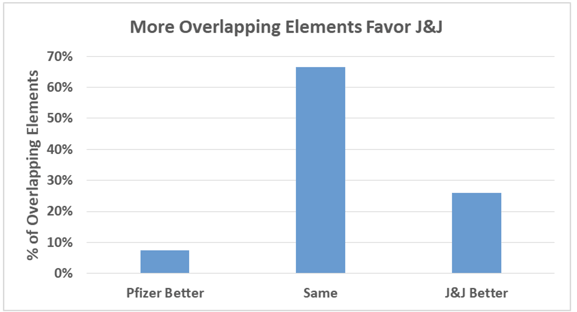
There were also a number of non-overlapping elements—things that were uniquely available for one company or the other. The weighted average rating for the non-overlapping elements also favored J&J.

The “weight” mentioned above is a proprietary value calculated by CSRHub that indicates the extent to which a particular data element’s rating is associated with consensus. Higher weighted elements have more effect on the rating calculation than lower weighted ones and thing brings the final rating closer to consensus. About 55% of the available “weight” for the comparison was in the “Same Rating” bucket. The other 45% pushed the J&J and Pfizer scores in different directions.
It seems that there is a firm basis for comparing these three virus producers not just on the quality of their vaccine, but on their environment, social, and governance performance. We haven’t explored in depth the factors that are driving each company’s ratings. And, there is the potential for errors in this type of comparison, especially when the amount of data is lower for one peer (as it is for Moderna). Still, those who want to add an ESG dimension to their understanding of our vaccine situation should be able to do so, if they wish.
 Bahar Gidwani is CTO and Co-founder of CSRHub. He has built and run large technology-based businesses for many years. Bahar holds a CFA, worked on Wall Street with Kidder, Peabody, and with McKinsey & Co. Bahar has consulted to a number of major companies and currently serves on the board of several software and Web companies. He has an MBA from Harvard Business School and an undergraduate degree in physics and astronomy. He plays bridge, races sailboats, and is based in New York City.
Bahar Gidwani is CTO and Co-founder of CSRHub. He has built and run large technology-based businesses for many years. Bahar holds a CFA, worked on Wall Street with Kidder, Peabody, and with McKinsey & Co. Bahar has consulted to a number of major companies and currently serves on the board of several software and Web companies. He has an MBA from Harvard Business School and an undergraduate degree in physics and astronomy. He plays bridge, races sailboats, and is based in New York City.
About CSRHub
CSRHub offers one of the world’s broadest and most consistent set of Environment, Social, and Governance (ESG) ratings, covering 20,000 companies. Its Big Data algorithm combines millions of data points on ESG performance from hundreds of sources, including leading ESG analyst raters, to produce consensus scores on all aspects of corporate social responsibility and sustainability. CSRHub ratings can be used to drive corporate, investor and consumer decisions. For more information, visit www.CSRHub.com. CSRHub is a B Corporation.
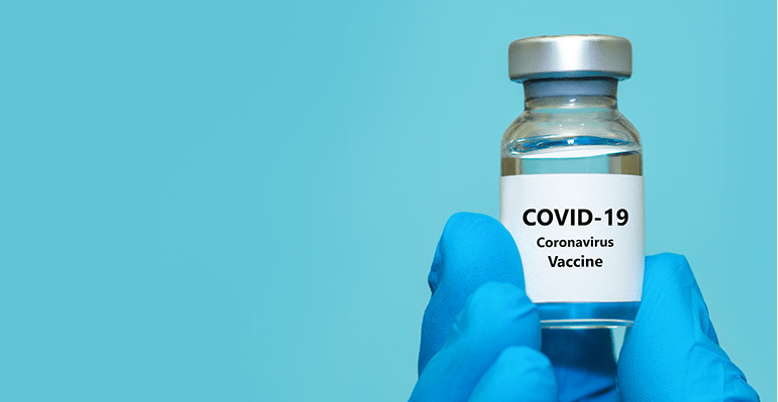
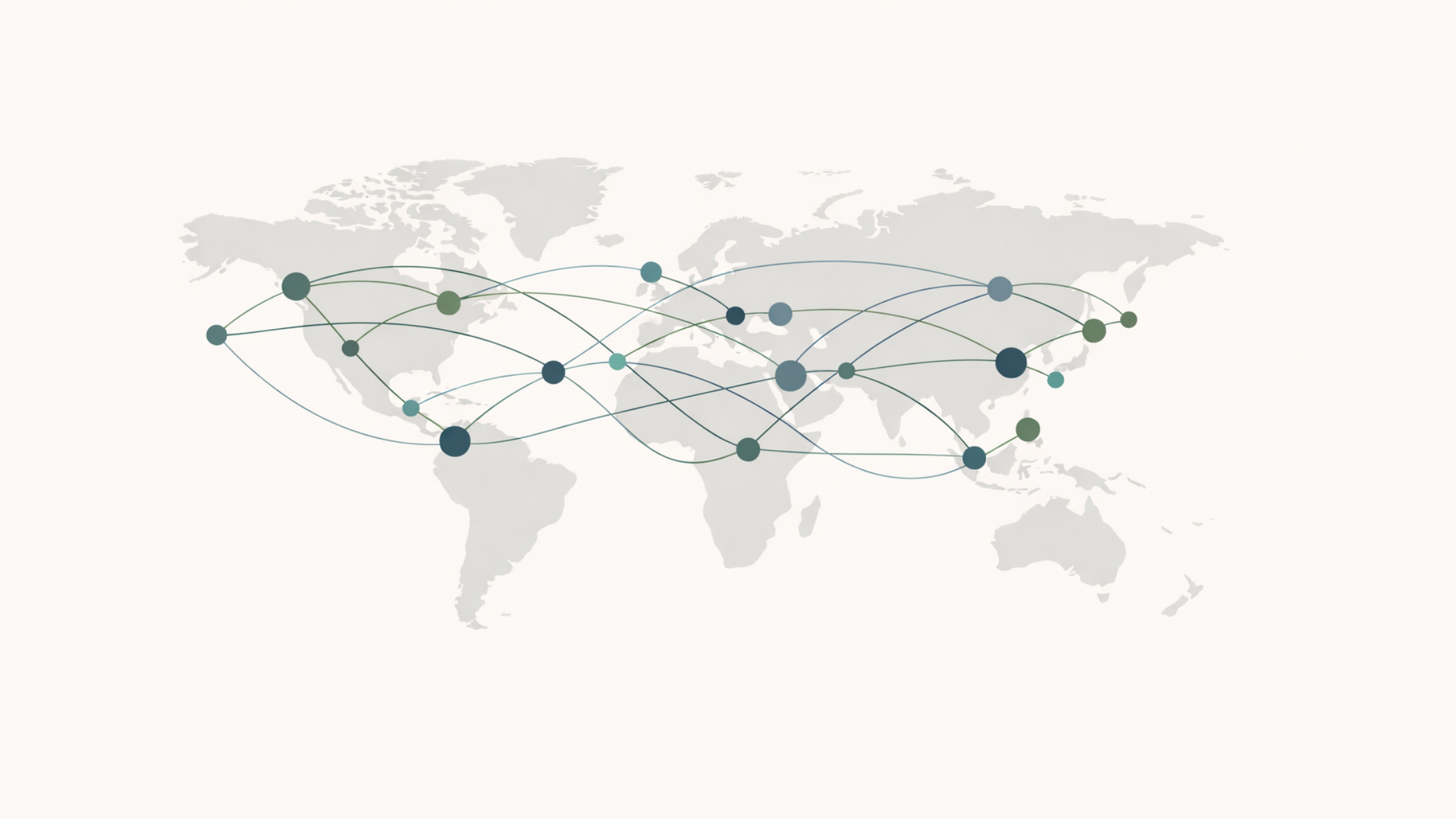
.png)
